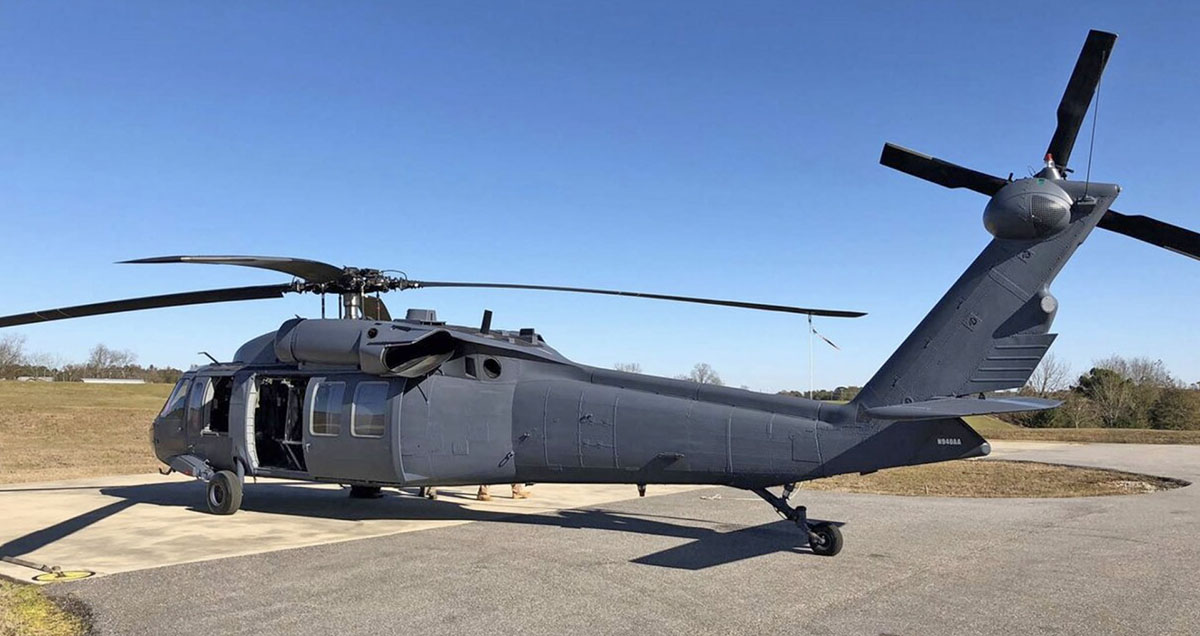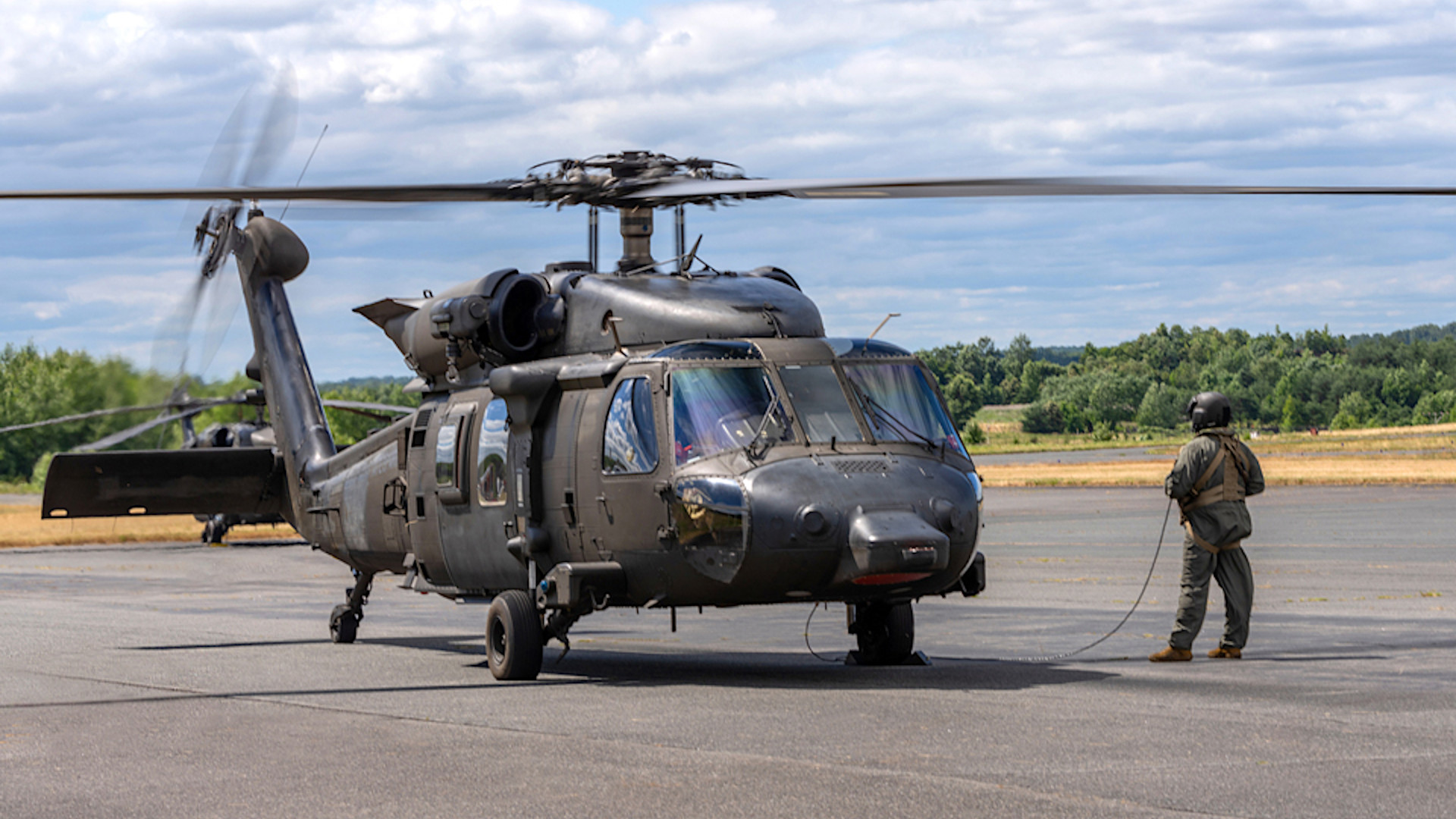Everything You Required to Know About the UH 60 Helicopter
The UH-60 helicopter, a cornerstone of United state Military aviation since its debut in 1979, stands for a remarkable mix of design and functional flexibility. As armed forces demands evolve, so too does the helicopter, with continuous improvements aimed at enhancing its abilities and integrating modern-day innovations.
Background of the UH-60
Developed in the late 1970s, the UH-60 Black Hawk helicopter became an action to the U.S. Army's demand for a flexible energy helicopter that could execute a selection of missions under challenging conditions. The motivation for its layout was the drawbacks recognized in the earlier helicopters utilized throughout the Vietnam War, especially in regards to rate, maneuverability, and survivability.
The Black Hawk was designed by Sikorsky Airplane, integrating sophisticated innovations and materials to improve its efficiency and longevity. It was officially presented right into solution in 1979, promptly becoming a crucial property for army operations - uh 60. Its capability to transfer troops, medical evacuation, and logistical support in both fight and humanitarian objectives made the Black Hawk a vital part of the united state Military's air travel fleet
Throughout the decades, the UH-60 has been constantly upgraded, adapting to the altering nature of warfare and the progressing requirements of modern armed forces operations. Its operational history consists of engagement in major problems, peacekeeping objectives, and calamity alleviation efforts, strengthening its reputation as a reliable and trusted helicopter in numerous atmospheres worldwide.

Layout and Specifications
The design of the UH-60 Black Hawk helicopter constantly shows a commitment to operational effectiveness and adaptability. Created by Sikorsky Airplane, this medium-lift utility helicopter features a smooth, aerodynamic fuselage that enhances rate and maneuverability. Its tandem rotor system, identified by two counter-rotating blades, lessens resonance and raises lift capacity, enabling much safer operations in diverse atmospheres.
The UH-60 is powered by 2 T700-GE-701C turboshaft engines, offering a maximum rate of roughly 180 knots and a series of around 400 maritime miles. Its robust airframe is built from innovative composite materials, guaranteeing durability while keeping a fairly reduced weight. The helicopter has an optimum gross weight of regarding 22,000 extra pounds, supporting a versatile payload arrangement.

Functions and Objectives
A functional platform, the UH-60 Black Hawk helicopter serves a plethora of roles and missions within army procedures. Made largely for troop transport, it can bring as much as 11 soldiers, making it an important asset for quick implementation and logistical support.
Along with army transportation, the UH-60 stands out in clinical evacuation (MEDEVAC) missions, outfitted with sophisticated Home Page medical equipment to offer critical treatment during transportation. Its capability to run in varied settings boosts its effectiveness in fight search and rescue (CSAR) procedures, where speedy removal of employees is vital.
The helicopter likewise plays a significant function in reconnaissance and security objectives, making use of onboard sensors and tools to gather knowledge. In addition, its flexibility includes logistical support, qualified of carrying materials and tools to forward running bases - uh 60.
In combat procedures, the UH-60 can be outfitted with numerous weapon systems, enabling it to offer close air support. Its multi-role ability makes the Black Hawk an essential tool for modern-day army forces, adapting effortlessly to the progressing demands of field of battle scenarios and ensuring goal success throughout a variety of operational contexts.
Efficiency and Capabilities
Known for its robust performance, the UH-60 Black Hawk helicopter flaunts remarkable abilities that enhance its operational efficiency throughout numerous missions. uh 60. This multi-role aircraft is outfitted with powerful twin-engine Turbomeca Arriel 1D1 engines, supplying extraordinary speed and maneuverability, with an optimum cruise ship rate of approximately 150 knots and a functional series of around 400 nautical miles
The Black Hawk's innovative avionics and fly-by-wire control systems dramatically boost flight security and handling, enabling important site it to run in diverse atmospheres, consisting of adverse climate condition. Its flexibility is more exhibited by its capability to lug approximately 11 fully geared up soldiers or a payload of roughly 8,000 pounds, making it perfect for troop transport, medical emptying, and logistical support missions.
Additionally, the UH-60 is made for survivability, including enhanced airframes, ballistic defense for team and travelers, and advanced countermeasure systems to avert hazards. The helicopter's agility and speed, incorporated with its ability for fast deployment, make it a vital possession in modern military procedures, ensuring that it stays a vital element of tactical air assistance and battlefield flexibility.
Future Developments

One considerable focus is the combination of sophisticated avionics systems, which will boost situational awareness through boosted navigating and communication abilities. This includes the prospective usage of fabricated knowledge to assist pilots in decision-making and goal preparation.
Additionally, future variants may incorporate advanced materials and layout attributes to bolster the helicopter's toughness and reduce its radar signature, boosting survivability in opposed settings.
The introduction of hybrid-electric propulsion systems is likewise on the perspective, intending to enhance fuel effectiveness and decrease logistical worries. Such developments might extend functional array and decrease the helicopter's ecological impact.

Conclusion
The UH-60 helicopter represents a substantial improvement in military aeronautics since its introduction in 1979. The UH-60's sustaining presence underscores its crucial role in modern army procedures and highlights the continuous advancement of army aviation modern technology.
The UH-60 helicopter, a foundation of U.S. Military air travel because its debut in 1979, represents an amazing blend of design and operational adaptability. As army needs advance, so too does the helicopter, with continuous improvements intended at boosting its capabilities and integrating modern-day technologies.The layout of the UH-60 Black Hawk helicopter regularly reflects a dedication to operational efficiency and versatility. Developed by Sikorsky Aircraft, this medium-lift utility helicopter features a smooth, wind resistant fuselage that enhances rate and maneuverability.The UH-60 helicopter represents a significant innovation in military aeronautics since its introduction in 1979.